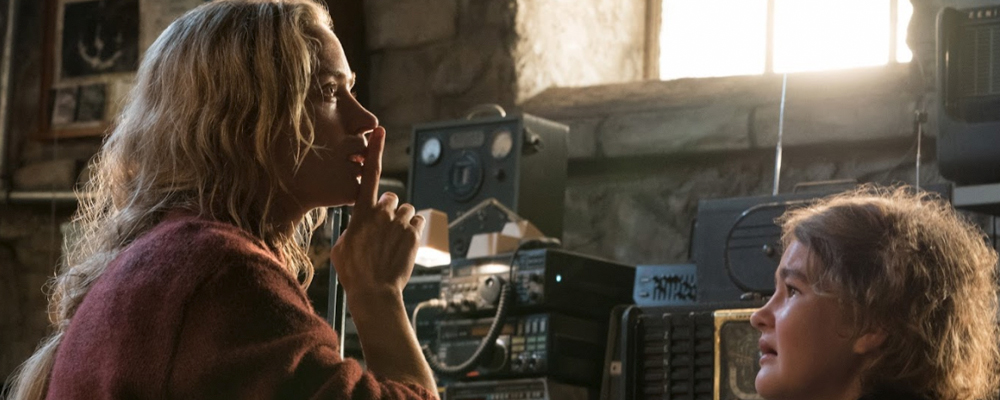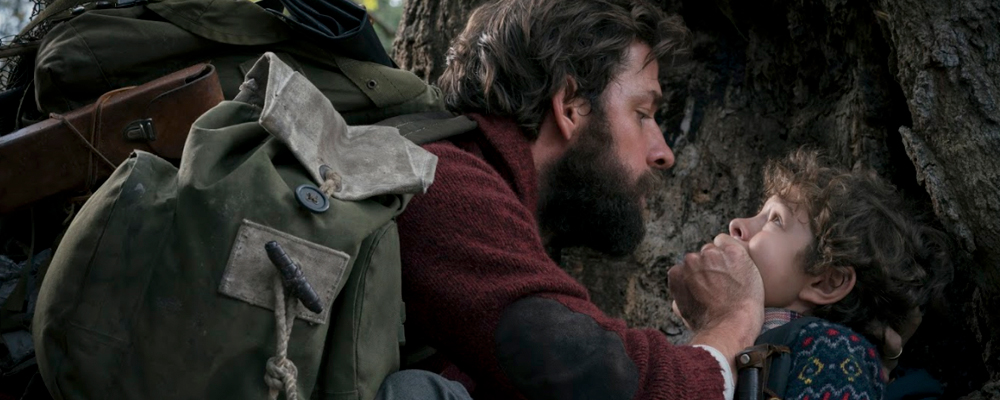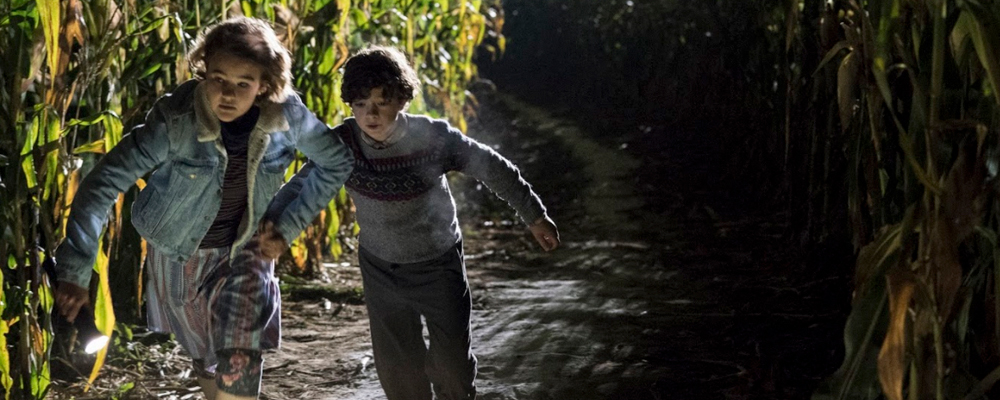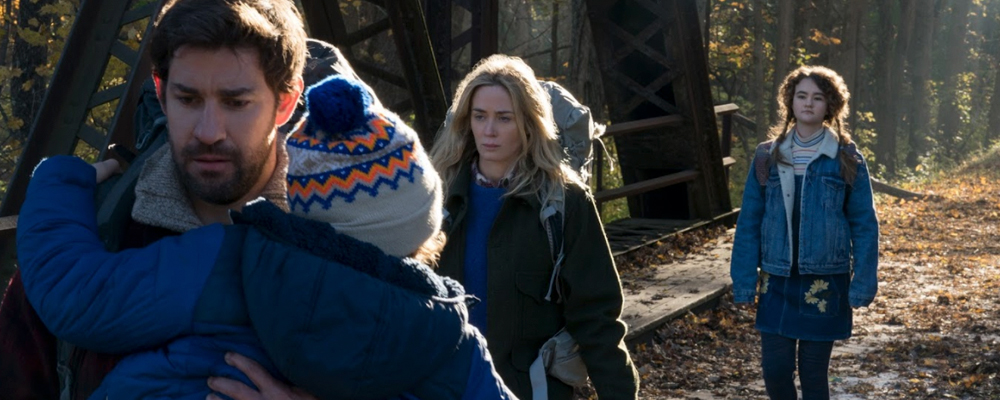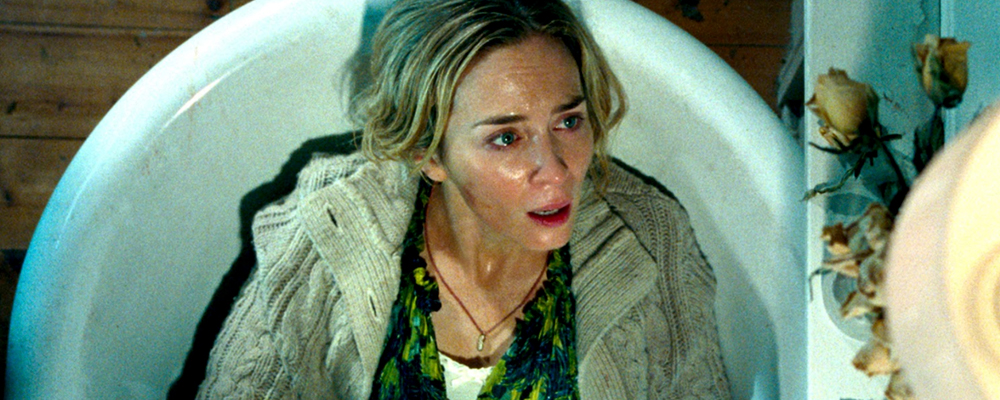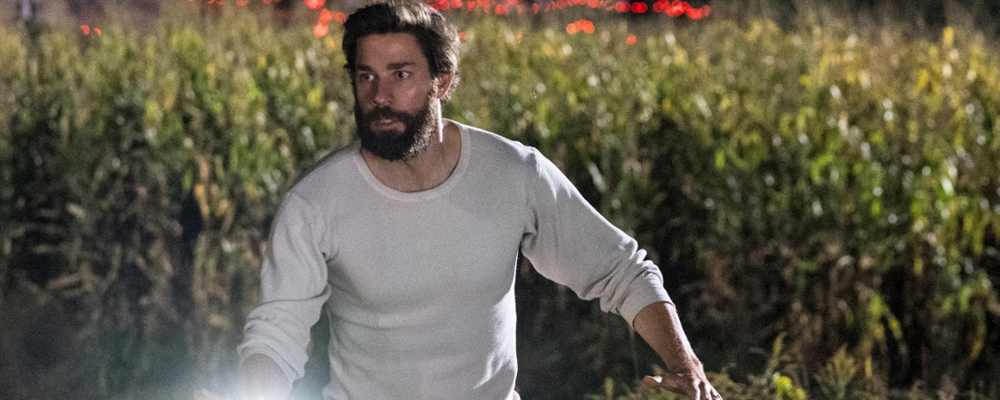‘A Quiet Place’ Skillfully Uses Silence for Chilling Horror
Alci Rengifo
“A Quiet Place” builds an overwhelming sense of tension by relying on absolute silence, then shattering it with bursts of sheer terror. Director John Krasinski uses the basic tools of filmmaking to tell a story featuring many familiar elements, but focuses on creating the very definition of an experience. Some of the best horror films work because they tap into the primitive, mastering an understanding that what truly scares us can be so simple and basic. The dark, loud noises, the sense of something unknown lurking nearby, these are things which have caused major anxiety since the age of cavemen. Krasinski taps into this truth with a movie that is never less than gripping.
Set in a near future, the film follows a family as it scrambles for supplies in an abandoned town. They are two parents, Lee (played by Krasinski himself), Evelyn (Emily Blunt), and their children, Marcus (Noah Jupe) and the deaf Regan (Millicent Simmonds). Society has been ravaged by the appearance of strange creatures which react to sound. If you make any noise you’re likely to attract one of the beings and meet a horrific death. Already during one fateful expedition the family lost a child to one of the monsters. After getting new supplies the foursome head back to a large farm where they reside, attempting to live as normal a life as possible, with little to no noise. Evelyn is pregnant and one day while Lee takes Marcus out for a wildlife lesson in survival, her water breaks. Everyone is separated but must hurry back home, because as Evelyn struggles with being in labor, the creatures make their way to the farm.
What Kransinski has fashioned here is a film that builds tension and horror through the careful use of images and sound. We are given just enough details about the creatures and what they represent to develop a coherent story, what truly matters is the crushing atmosphere. Like John Carpenter’s “Halloween,” this is a movie where you find yourself fully caught up in the moment of events as they unfold. The best scenes occur when characters find themselves in dead silence, looking into the dark, aware there is something lurking and only noise can bring it out. One moment of sheer, visceral force is a shot where Evelyn, aware there is a threat in the house, slides into a bathtub and the camera reveals that she is starting to bleed from labor. No dialogue is necessary. We just get it. This highly creative film features many such moments. Krasinski confirms that he is a director with a sharp sense of how to convey an idea through pure imagery. In another memorable scene Lee and Marcus finally arrive home at the dead of night, only to see emergency red lights strewn across the farm light up, or there’s the moment where Lee pleads with another character not to make a sound in the forest, and all you need to do is pay attention to facial expressions. Cinematographer Charlotte Bruus Christensen has a rich, gothic eye, filming wide landscapes with ominous light, and carefully composed interiors.
“A Quiet Place” is also a triumph of sound design. To rely solely on silence is quite the feat, so Krasinski and his team carefully select just where to produce noises jarring and ever so whispered. It was a brilliant choice to make Regan deaf, through her the film shifts from absolute silence to sound via her hearing aid. The ingenious trick here is that the film will go silent at moments where in real life we would plead to be able to hear. Stunts and suspense are pulled off with the horror heightened because of the overwhelming pressure of the characters needing to stay quiet. Consider a scene involving an upturned nail on a stair, or a terrifying plunge into a container. The volume of terror is turned up because the characters simply can’t even scream.
Essential in this movie are the performances. The cast has little room to fall back on monologues. Key moments must be conveyed through an expression, the movement of a hand or a tense stare. Krasinski and Emily Blunt are rugged heroism, but the real stars are the child actors. Noah Jupe and Millicent Simmonds are vulnerable but sharp. Simmonds players the stronger role of the two, creating the kind of kid who has tendency to go off on her own, but because of her independence begins figuring out things everyone else is missing. Meanwhile Jupe’s work has reminders of the kind of seriousness we would see in the late Anton Yelchin during his child acting days.
“A Quiet Place” becomes that rare horror film that combines real artistry with good old fashioned scares. You can appreciate the visual style, intricate sound design and music, but it delivers as one of those movies where popcorn will fly into the air along with a shriek or two. There is a reason why monsters and ghouls never go out of fashion, because they have always been part of our storytelling culture and nightmares. Alfred Hitchcock used to say that he enjoyed “playing the audience like a piano.” This movie succeeds in doing just that.
“A Quiet Place” opens April 6 in theaters nationwide.

